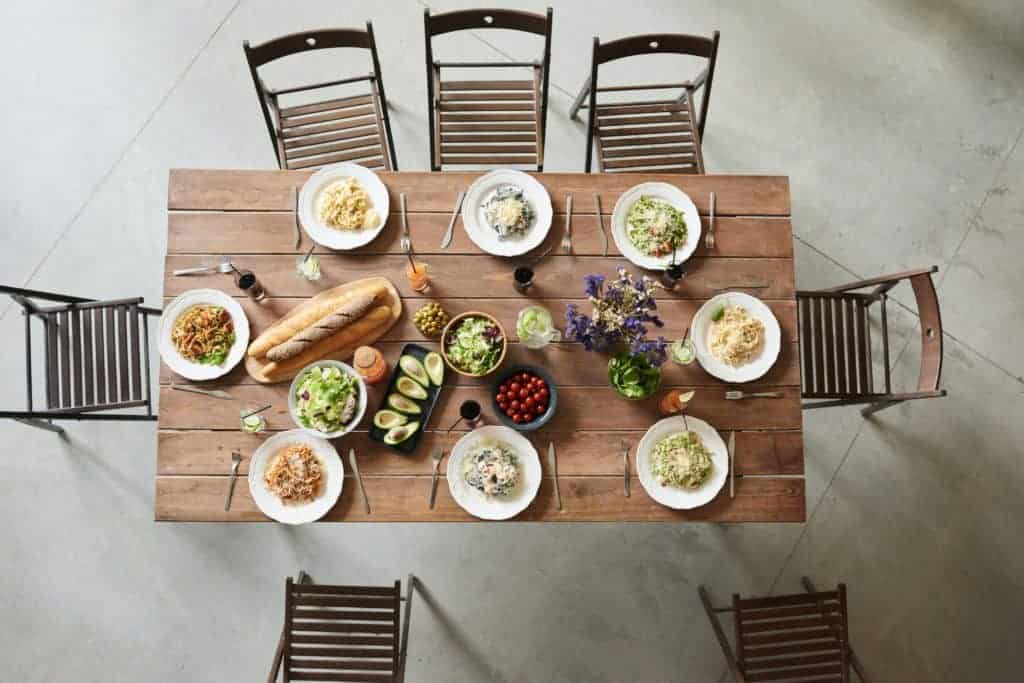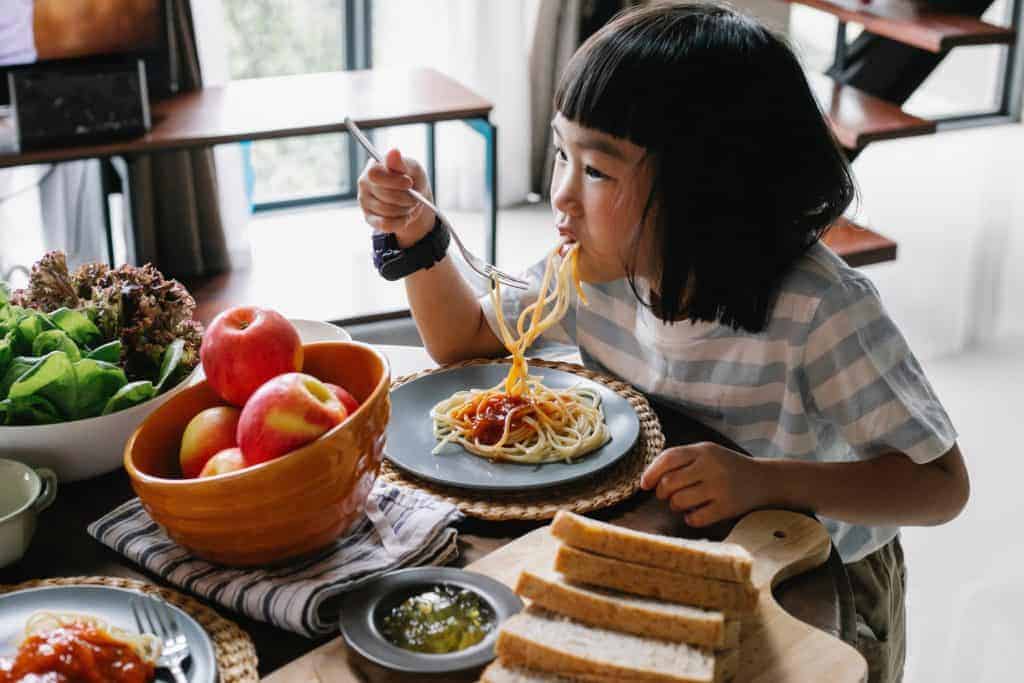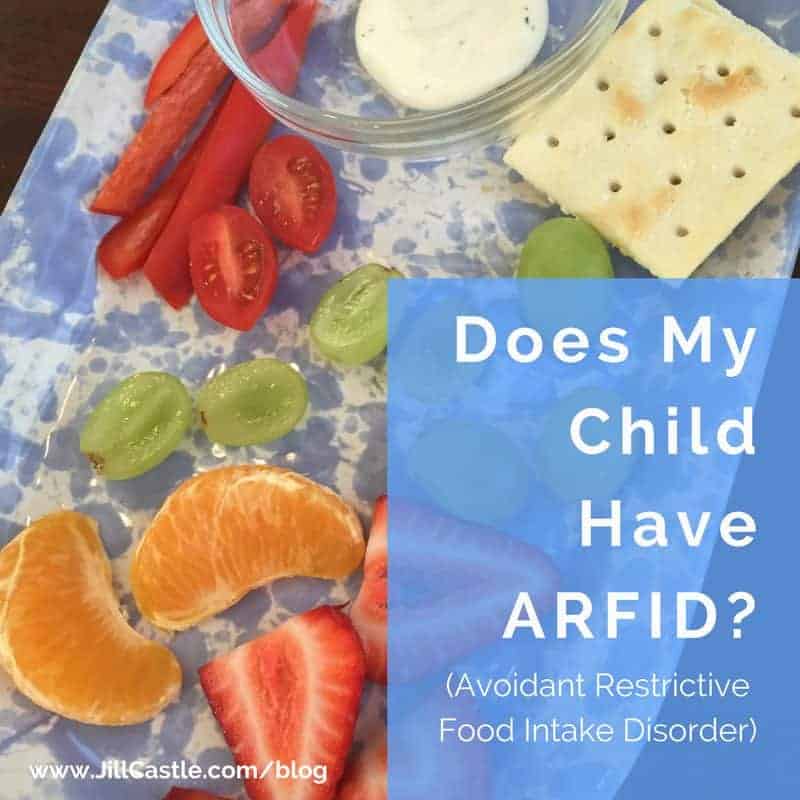Family-Style Meals: The Wholesome Way to Feed Your Family
October 14, 2022
Serving meals family-style will radically change the vibe of your family gathering. This modern, family-centered dining experience is a no-brainer for parents who want to raise good eaters.
In 2006, I changed how I served my own family meals. I went from pre-plating our meals to serving them family-style. This one change led to many benefits, some of which I couldn’t imagine.
Family-style meals are critical to raising good eaters. The many benefits for children include:
- A system for honing gross and fine motor skills
- A place where children can make independent decisions about food
- A low pressure environment for trying new foods
- A safe place to practice table manners
- More fun, connection and conversation at the table
Hands down, changing to a family style service for meals was one of the best parenting decisions I made for my family.

What is a Family-Style Meal?
A family style meal is one where all the foods and drinks for the meal are placed on the table in the center.
Food items are passed around the table, one by one.
Diners – in this case parents and kids — choose the food items they want on their plate and serve themselves.
5 Benefits of Family-Style Dining for Kids
Many parents place a high priority on the nutritional quality of the meal. Don’t get me wrong, this is important.
However, family style meal service offers other important benefits to children.
1. Children Develop Better Motor Skills (Gross and Fine Motor)
The act of balancing platters and bowls, passing them to the left or right, and scooping food, for example, builds on a child’s existing gross and fine motor skills.
Of course, children need practice to become skilled in this area.
Not only do mealtimes with adults offer the support and guidance children need to become more skillful in this area, kids are also cultivating autonomy and self-esteem from learning.
2. Kids Make Independent Food Decisions
Family-style service allows your child to choose what she wants to eat (from what you’re serving), and allows her to determine how much she’ll put on her plate.
There’s great learning from making your own plate of food. Maybe your child puts too much on her plate (overserving), or not enough (underserving).
Over time, she’ll learn more about her appetite and body, and be able to serve herself the right amount of food.
A bonus: This method discourages you from being over-involved in your child’s eating, while honoring the individual food preferences and eating style of your child.
3. Children Try New Foods, Without the Pressure
For new eaters or picky eaters, family style dining creates an easy exposure to new foods.
Just seeing, smelling and passing food around the table engages the senses, which is one of the first steps to trying new foods.
Plus, ditching the pre-plating method (when you put all the food on the plate first and give it to your child) may encourage children to try new tastes simply because the pressure to eat is off.

4. Kids Can Practice Table Manners
During family mealtime, children can learn and practice table manners, such as ‘please,’ ‘thank you,’ and other courtesies.
As kids hone their motor skills, they also learn to carefully pass, be watchful of spilling, and other polite actions towards others at the table.
And let’s not forget that waiting for food and others to pass it teaches patience and gratitude.
5. Families Cultivate Connection, Conversation and Fun at the Table
I believe family meals, in general, are key to a connected family.
Serving meals family-style enhances this further by taking the focus off of eating a certain amount or cleaning the plate.
Rather, parents come to understand that children are in charge of what and how much they eat, and parents are in charge of making balanced, nutritious meals and keeping mealtimes positive.
When this is in place, mealtimes can be fun and a source of deep connection.
How to Serve a Family Style Dinner
The good news about serving meals this way is that you aren’t really serving the food.
You’re placing food in bowls and on platters and placing them in the center of the table.
Let me repeat: Your job is to prepare the items of the meal and put them in serving dishes. Then, place those serving dishes on the table.
I’d encourage you to start the meal by choosing one of the bowls or platters of food, serve yourself, and pass the food to the right or left.
Move through all the meal items until everything has been passed around the table once.
Try not to tell your child what to eat. Let him figure it out.
Remind him that this is the meal for the evening and the kitchen will be closed afterward.
Maintain the eating schedule and limits you have on extra snacks at night to encourage your child’s eating at mealtime.
Can Young Children Participate in Family Style Eating?
Yes! For children under the age of three to four years, you can hold platters and bowls of food and ask if they would like some of this food or that food.
Let them indicate how much food they want on their plate. Then, you place it on their plate for them.
Around age four (or possibly younger), your preschooler will probably be able to manipulate the serving utensils while you hold the bowl or platter of food.
She can scoop food onto her plate independently. (She’s probably gotten lots of practice at preschool already!)
By age five, many kids will be able to serve themselves and pass food independently.
Of course, if your child needs help, support him.

What Can I Serve at a Family-Style Meal?
Any meal can be served family style! There aren’t any special recipes for this. It’s more about laying out the menu items on the table and letting your child pick and choose based on what’s there.
I’d encourage you to serve a balanced, nutritious meal that includes most of the food groups, such as:
- Protein foods
- Whole grains
- Dairy
- Fruit
- Vegetables
Here are a few ideas to get you started:
A Pasta-Based Meal Served Family-Style
- Meatballs
- Whole wheat spaghetti or regular spaghetti
- A glass of milk
- Clementines
- Tomato sauce (for the pasta)
- Carrot sticks
A Chicken-Based Family-Style Dinner
- Grilled chicken strips
- Brown rice
- Cheese stick
- Sliced strawberries
- Cucumber circles and Ranch dressing
A Plant-Based Family-Style Meal
- Macaroni and cheese
- Green beans
- Apple slices
- Vanilla Yogurt
What if My Child Doesn’t Like Dinner?
If your child doesn’t like what you’re serving for dinner, you can always add an item or two that your know your child enjoys eating.
This could be a small plate of crackers, cheese, or fruit.
Many families have successful meals in this situation by adding milk, fruit, or bread to the dinner menu.
Need More Help with Family Style Meals?
Check out my recorded workshop, Eat in Peace, where I take you step-by-step through the process of setting up family-style meals and help you navigate all the obstacles you might face, such as picky eaters and overeaters.











